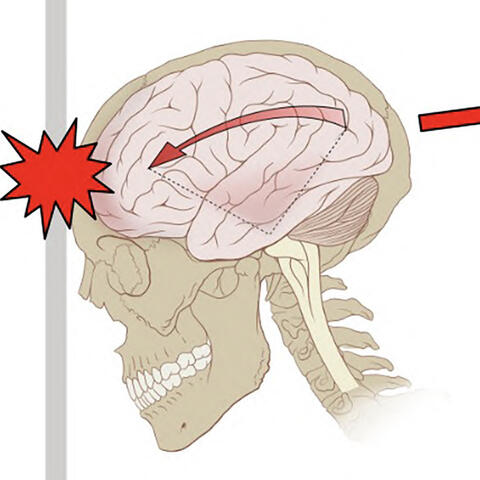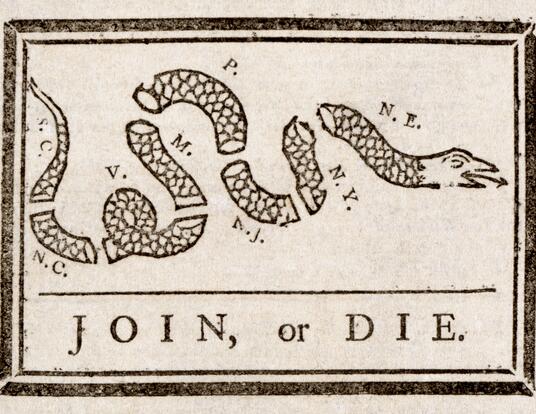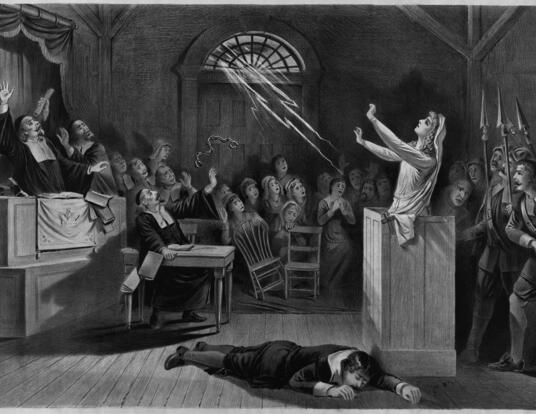Colloquy Podcast: How Elite Universities Grapple with the Legacy of Slavery—and Why It Matters
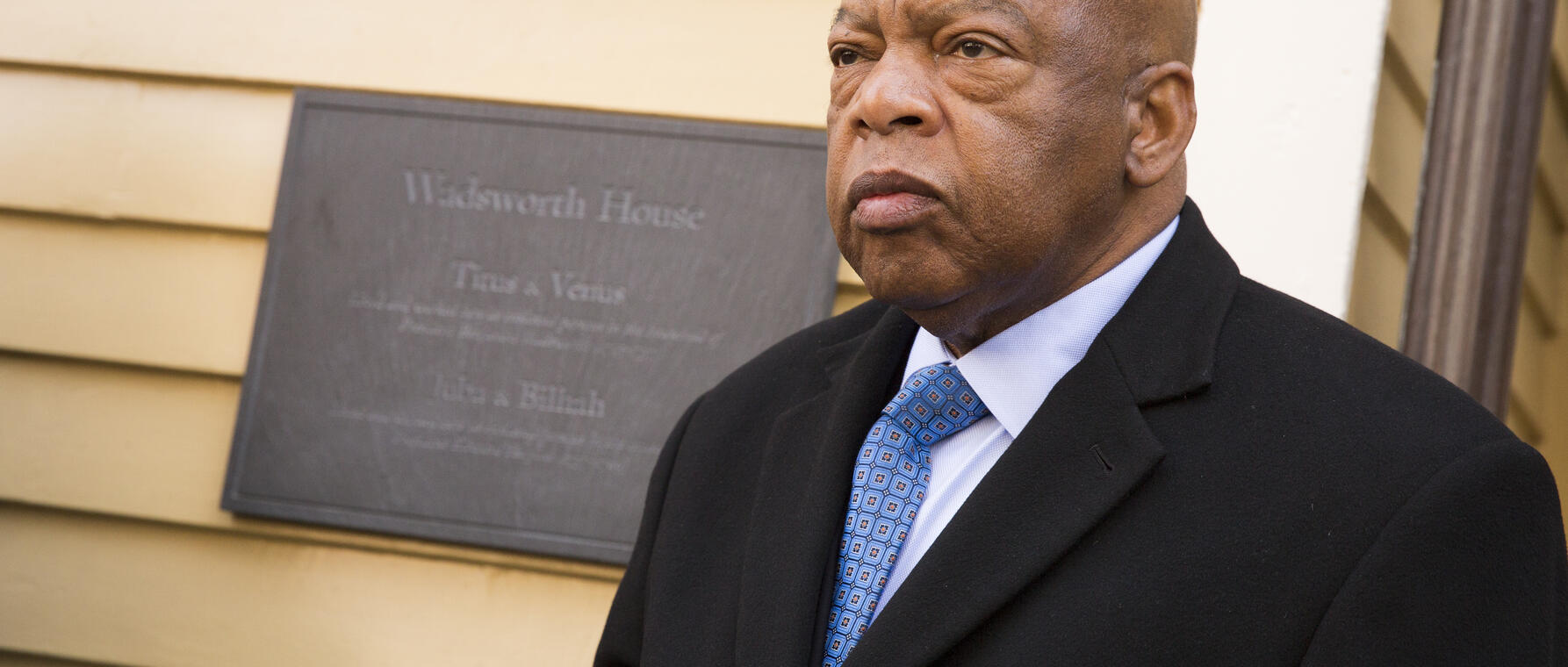
The history of slavery in the United States, including at the country's colleges and universities, is deeply disturbing and painful. But Professor Sara Bleich, PhD ’07, says it’s critical that our society continue to do so—and that universities have a responsibility to lead the way. Harvard’s inaugural vice provost for special projects and a former member of the Obama and Biden administrations, Bleich leads the effort to implement the seven recommendations of the 2022 report on Harvard & the Legacy of Slavery. Her goal is to help the University—and, by extension, the country — move forward into a future where Black Americans can succeed and thrive.
Before we get into today's discussion about elite institutions and the legacy of slavery, why did you decide to lead Harvard's work in this space?
This was a really big decision. You know, if you look at my career, which has largely been two decades of public health policy research sprinkled in with some opportunities to serve in the federal government, in the Obama and Biden administrations, my North Star has always been: how do you help underserved people achieve a better quality of life? And there are a number of personal and professional motivations that have really pushed me in that direction.
First and foremost, I'm mixed Black and white. Growing up, I was very close to both of my grandfathers. My mother's father was a Black corn farmer in Maryland, and my father's father was a white radiologist in New York City. My mom's dad, the corn farmer, built his house with his own two hands. And my dad's dad lived in an apartment building on the Upper East Side, which at the time had the second fastest elevator in the entire city. I grew up extremely close to both of them, and I remember when they died, which was within three weeks of each other, it felt like my Black grandfather got the worst of care, and my white grandfather got the best of care. That has really lit a fire in my belly to help people who were underserved achieve a better quality of life.
Another key personal motivation for me is that I grew up in inner-city Baltimore with my twin brother and my twin sister. Excuse me, my older brother. My parents were public school teachers. Looking back on that experience, one thing that I have come to understand is that talent is everywhere that you look, but opportunity is not. And so this initiative by Harvard, focused on its own legacy of slavery and mending enduring harms, is a wonderful example of how you create opportunities where they don't currently exist.
A third personal motivation for me is that I'm a mom. I have two not-so-little girls anymore; they're 11 and 13, and I also happen to be Black, and the world is going to treat them differently because of the color of their skin. It is really important to me that I do my small part to make the world a little bit better for my girls and the many, many other children like them that are out there in the world.
Finally, one of the reasons why I was drawn to public health so early in my career is that it is not research for the sake of research. It is rigorous investigation that is meant to take scientific findings and put them out into the real world. Harvard's legacy of slavery work is built on a bedrock of rigorous academic research, and now the job is implementation. It's a really exciting opportunity to think hard about how a university like Harvard can do meaningful work in this space.
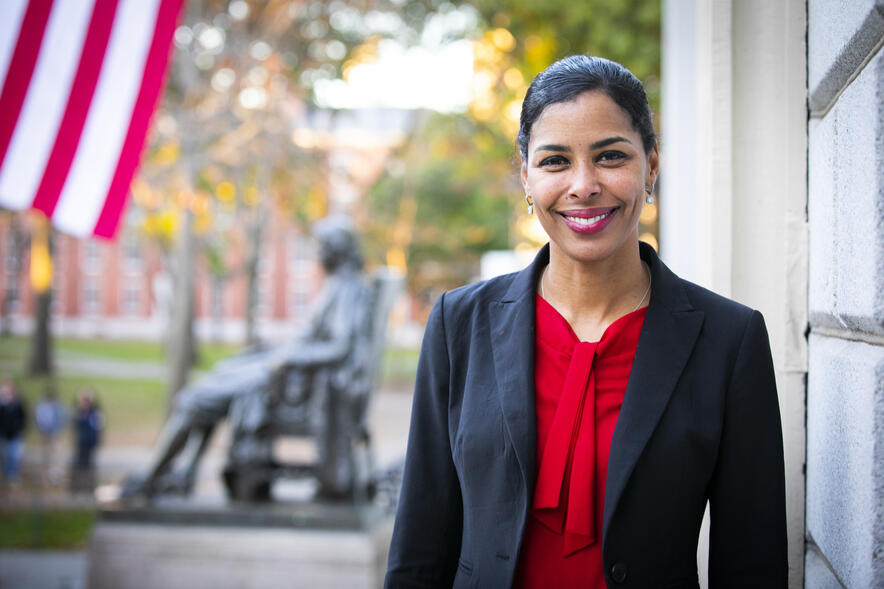
Let's move from the personal to the institutional. What prompted elite educational institutions like Brown and Harvard to start grappling with their connections to slavery? Why is it important, and what's pushed these efforts forward in recent years? What effect does this work have on communities?
That's a number of questions, so bear with me while I try to unpack them. First, thinking just about Harvard—like so many other things at this University, our work around the legacy of slavery began with curiosity. In this case, it was Professor Sven Beckert, who's in the history department and still on faculty. In the early 2000s, he taught a series of seminars with undergraduates that explored Harvard's entanglements with slavery. This work was picked up by President Drew Faust, who in about 2016 acknowledged Harvard's complicity in slavery. She, along with the late Congressman John Lewis, unveiled a plaque at Wadsworth House in Harvard Yard that acknowledged four enslaved people who lived and worked for two Harvard presidents and their families. Their names were Titus, Venus, Juba, and Bilha. And then, as you heard in the intro to this session, it was in 2019 that President Larry Bacow established the Presidential Committee on Harvard & the Legacy of Slavery, led by Tomiko Brown-Nagin. That report came out in the spring of 2022, and it is the recommendations from that report that have launched Harvard's Legacy of Slavery initiative, which I now lead.
As you heard in the intro to this session, it was actually Brown, the first Ivy League school to begin doing exploration in this space. If you look across the eight Ivies, six of them are currently doing work in this area. What's interesting is that the flavor of the work really varies. If you look at Brown, where the work was originally led by Dr. Ruth Simmons, at Harvard, and Yale, those are institutionally led efforts. If you look at Penn or Princeton or Dartmouth, those are led by students or faculty.
So, the flavor of the work really varies depending on the university. If you take a step much farther back, away from the small number of Ivies, and look at the 4,000 colleges and universities around the country, there are about 90 of them that are exploring their legacies of slavery. This is a space that is increasingly active, and Harvard has the privilege of learning from many other colleges and universities that have come before us, and that can help us understand how to best make a difference.
Okay, so the next part of this question is: Why is this work important? And here, what I would say is if we want to create a more equitable future, we must understand our past. In understanding our past, we are able to speak truth and work towards mending harm.
Now, the third part of this question is: What has pushed these efforts forward in recent years? At Harvard, we have been actively working to implement the recommendations from that report by the Presidential Committee on Harvard & the Legacy of Slavery. This includes the creation of my position, which didn't exist prior to 2023. It includes a brand-new office that has been stood up with a new staff to support this work, and the mission of the Harvard Legacy of Slavery Initiative is to, first and foremost, tell the truth about our legacies of slavery and then work to mend enduring harms through purposeful change that is grounded in Harvard's educational mission and the report recommendations.
Another key thing that we have done to advance these efforts is we created an advisory council for the initiative to guide the implementation work, which includes preeminent faculty and leaders: Skip Gates, Martha Minow, Annette Gordon-Reed, Evelyn Hammonds, Phil Deloria, and Lee Pelton. We've also named a memorial project committee, which is chaired by Brenda Tindal, the chief campus curator for the Faculty of Arts and Sciences, and Eric Höweler, a professor in the design school whose architectural firm led the creation of the memorial to enslaved laborers at UVA. Then, we are advancing programmatic work. And I'll talk more about this later, but just briefly, we're advancing programmatic work in three main areas. One is memorialization and education. The second is advancing partnerships with historically Black colleges and universities. The third is supporting descendant communities. We'll talk more about the various pieces of those priority areas.
If we want to create a more equitable future, we must understand our past. In understanding our past, we are able to speak truth and work towards mending harm.
So, the last piece of the question is: What benefit does this body of work have on communities? At the Legacy of Slavery Initiative at Harvard, we believe that if we transform Harvard into an institution that takes full accountability for its involvement in and benefit from slavery, if we actively advance reparative efforts as integral parts of University culture, then we will have a meaningful impact on two groups: direct descendants (those whose ancestors were enslaved by Harvard leaders, faculty, or staff) and descendant communities (describing those who have been directly or indirectly impacted by chattel slavery).
You won't be surprised to hear me say that this work will impact different communities in different ways. When it comes to our students and alumni, who are extremely privileged to attend Harvard and will likely do very well in their careers, my hope is that knowledge about the University's entanglements with slavery and the subsequent implementation work will inspire them to also do good. When it comes to the two groups that we seek to serve—direct descendants and descendant communities—my hope is that our current and future programming makes real and meaningful differences in their lives. When it comes to other colleges and universities, my hope is that more and more begin to explore their own legacies of slavery and then make investments and implementation activities to mend past harms.
You mentioned the three core priorities of the Legacy of Slavery Initiative: memorialization and education, partnerships with historically black colleges and universities, and supporting descendant communities. How did the initiative come up with these core priorities? Are they typical for institutions across the country grappling with slavery's legacy?
Great question. As I mentioned, we are very fortunate to be guided by an advisory council, which has helped to shape and think about the focus areas for this research. It was in collaboration with the advisory council that we developed those three focus areas. Let me take a moment and walk you through what we're trying to achieve with each of them.
For the first one, memorialization and education, we are at the beginning of a process to design a campus memorial that will recognize and honor the legacies of enslaved people whose labor facilitated the founding, growth, and evolution of Harvard. At this stage, the Memorial Project Committee is seeking community input, including from descendant communities. As well as honoring enslaved people through memorialization, it will also continue to educate on the history and legacies of slavery at Harvard through courses, tours, and other outreach activities. Just to give you one example, we have a Landscape of Slavery at Harvard walking tour, which has been in place for a little over two years. Over that time, we've had the privilege of hosting more than 500 people, both in and outside the University. Incidentally, this is a tour that was started by the University chaplains to create a more spiritual opportunity to slow down and to visit six stops around campus, to really understand the work and understand the report.
The second focus area is advancing HBCU partnerships. The initiative is building and deepening partnerships with research-intensive HBCUs and plans to further strengthen existing programs and start new ones. Just to give you a flavor of some of the things underway, we have a number of projects, including the HBCU Digital Library Trust. This is a partnership between the Harvard Library and the AUC Woodruff Library in Atlanta, and it takes archival content from HBCUs, digitizes it, and makes it publicly available for free.
Another example is the Du Bois Scholars Program, a partnership between Harvard College, 21 different historically Black colleges and universities, and the Harvard Legacy of Slavery Initiative. It brings rising juniors and seniors from research-intensive HBCUs to Harvard to participate in a nine-week research program called the Harvard Summer Research Village. While the scholars are on campus, they have time to work with a faculty member and present their research at the end.
Another example is professional development for new HBCU presidents, which is a partnership between the University and Clark Atlanta University. The purpose is to create opportunities for new presidents at HBCUs to help ensure their success, as turnover is very high among HBCU presidents.
A final new program that I want to flag is called the FAS Dean's Visiting Professorship Program. This was the brainchild of Claudine Gay when she was dean of FAS. It launched in September of 2024, creating semester or year-long sabbatical opportunities for faculty from research-intensive HBCUs to come to Harvard and encourage knowledge exchange and scholarship. For each of these programs, we're looking for ways to expand them as we move forward—for example, creating bidirectional opportunities for scholars and for faculty.
Now, the third priority area is supporting descendant communities, which has two main pieces. One is the Reparative Grant Program, which aims to support innovative and impactful programs that address systemic inequities affecting people who have been harmed by slavery, particularly in the Boston and Cambridge communities and regional tribes. The program offers two types of grants: seed grants for up to $25,000 for one year, and impact grants for up to $350,000 for two years. The inaugural round distributed a total of $2.3 million to 14 organizations, with 90 percent of the funds allocated to community-focused nonprofits.
The second part of this bucket of supporting descendant communities is continuing the meticulous research to identify living direct descendants of those whose ancestors were enslaved by Harvard leaders, faculty, or staff. All of the work that I just described and pretty much everything in our portfolio is done in partnership. We are very much reliant on the good ideas of others to help push this work forward. In fact, many of the programs we're currently supporting didn't originate with us—they originated with our partners.
We are also right now investing a lot of time in a listening and learning tour to do two main things. One is to raise awareness about progress to date. The second is to receive feedback on things like: what should we keep doing? What should we stop doing? What should we start doing?
The inaugural round [of the Reparative Grant Program] distributed a total of $2.3 million to 14 organizations, with 90 percent of the funds allocated to community-focused nonprofits.
If you look at other colleges and universities that are exploring their legacies of slavery, you will see similarities and differences. In fact, if you know the work of one school when it comes to addressing legacies of slavery, you know the work of just one school. In terms of similarities, we are like a lot of other colleges and universities in that we have made a commitment to creating a campus memorial to honor those who were enslaved.
Another shared activity across a number of schools is thinking about how you advance HBCU partnerships. But there are also differences. There are few institutions that are actually doing research to identify direct descendants. The bottom line is that there is not one right way to do this work. The key is that it be done with humility, sincerity, and seriousness.
You've done a great job talking about the core priorities, the initiatives, the programs, and even the achievement of the Legacy of Slavery Initiative. But what are some challenges that the initiative has faced, both internally and externally, and how have you addressed them?
I will be very frank with those who are listening and say that this is not easy work. There are a number of expected challenges and unexpected challenges. Let me just offer up some of the biggest ones that we've faced. One is the criticism and skepticism from a broad array of stakeholders about the University's commitment, which is strong.
One way we're dealing with that is to build trust through the work. Let the programs we're doing and the outcomes speak for themselves. Another big challenge, which is not unique to the legacy of slavery space, is just waning awareness. This is natural, and in a place as dynamic as Harvard, it is almost inevitable. To make sure that we keep our community and the broader community aware of what we're doing, closely focusing in on our core priorities. We're reminding our community of why this work matters to them and why they should pay attention.
Another big challenge is that awareness about the report and the initiative is very low. We've got a small number of people who know a lot and many, many more people who know very little or nothing. We are actively doing community engagement in and outside of the University to tell the story of the work We have to recognize that when it comes to thinking hard about legacies of slavery, this work takes time, and it cannot be rushed. We are dealing with more than 400 years of history, and mending harms is going to take a fair amount of time. We need to give ourselves that space, and we need to do it carefully and deliberately in partnership with the communities that we seek to serve.
What personally motivates me is the knowledge that this work matters. And if we are able to get it right, then the impact will not just be in what we're able to achieve at Harvard, but it will be in our ripple effects. It will be in our ability to inspire other colleges and universities to follow this same path.
You've mentioned, throughout our conversation, partnerships and collaborations. Harvard is part of the Universities Studying Slavery Consortium. What is the consortium, and what can Harvard learn from other universities participating in it?
The Universities Studying Slavery Consortium includes more than 100 institutions of higher learning. It's not just in the United States, but also includes institutions in Canada, Columbia, Scotland, Ireland, and England. These schools are collectively focused on sharing best practices and guiding principles as they engage in truth-telling educational projects focused on human bondage and the legacies of racism in their histories.
The consortium was created in 2016 by the University of Virginia's Presidents Commission on Slavery and the University. It was created to ensure that UVA's work would spread beyond Virginia and also in response to calls for guidance from other schools. Member schools are committed to research, acknowledgment, education, and mending harm. I have been really struck by the diverse set of people who are part of a consortium. In some cases, it's faculty or students who just care about this topic. In others, it's administrators who are part of campus-wide efforts.
One of the most pleasant surprises that I have experienced in doing this work at Harvard and in interfacing with people around the country doing this work is to see that it has unlocked enormous creativity. I have been struck by the number of people I have met who care so much and want to find ways to lean in. This work has nothing to do with their day job; it's just something that is personally important to them. The consortium, like many people at Harvard, consists of those who deeply care about this work and are thinking creatively about how to drive change in institutionally compatible ways.
I'll just make one last point. Why the flavor of these efforts varies so much from institution to institution is because there is no one-size-fits-all approach. Harvard has a certain way of doing business, and each of the schools and units at Harvard have certain ways of doing business. We will not be successful if we come up with cookie-cutter solutions. We can realize success if we work closely with schools and units to figure out what programs and practices we can establish that will be with us for the long term and help this work take root.
I'd love you to talk a little more about the creative and generative energy that comes out of these efforts, because obviously, the country's history of slavery and racial injustice is deeply disturbing. So how can institutions of higher education, like Harvard, address it in a way that induces hope and healing, rather than despair and resentment?
Well, I'll just echo your words: it is deeply disturbing indeed. Institutions of higher learning have an important role to play in passing on knowledge about slavery and its legacies to current and future generations. At Harvard, we particularly embrace this role because our motto is "Veritas," or truth. Without understanding the truth about history, which is a critical bedrock, we cannot understand our past, and we cannot create a more equitable future. The truth is also very instructive. You can look back on slavery and say, my gosh, it is incredibly sad, which I would wholeheartedly agree with. You can also look back on slavery and say, "Oh my gosh, look at these examples of resilience. Look at these examples of perseverance." Look at what people have been able to do, despite the fact that they were faced with such insurmountable challenges. In that way, my hope is that the work happening in institutions of higher learning around educating about legacies of slavery, and possibly mending harm through implementation work, can inspire us to be hopeful and to work towards a just future for all of us.
One of the ways the Harvard Legacy of Slavery Initiative has encouraged truth-telling is largely through our education efforts. Just to give you one example, we funded a project by Meira Levinson, a professor here at Harvard in the School of Education, and Danielle Allen, a professor in the Harvard Kennedy School. They created the Past to Present Institute. The institute, which happened in the summer of 2024, brought over 50 educators from 23 states together here at Harvard. The educators were immersed in a week-long program about how to teach about the history and legacies of enslavement and lead classroom discussions on challenging and contemporary topics. The institute equipped educators on how to facilitate difficult conversations around the country's ties with slavery in ways that were developmentally appropriate for the children in their classrooms.
I really encourage you [in the Harvard community] to ask yourself, how can you advance this work ? It can be big, it can be small, but I can assure you that every step will make a difference.
You've talked about the importance of truth-telling. That's certainly one change that's come as a result of the initiative. Are there other changes, either on campus or in our society, you hope will result from HLS efforts?
This is a question that I get all the time, and it's such a great question. I have a lot of thoughts on this, and I'll be honest and say we haven't been doing this work for very long. We should have this conversation again in a few years. But here's what I would say right now.
In the short term, I would consider Harvard's Legacy of Slavery Initiative successful if we make real and tangible progress in operationalizing the recommendations from the report, as it is our roadmap guiding the work that we are doing.
In the long term, I hope that we can accomplish three main things. When the report was released, one of the things President Bacow said was that this effort should not live at the center of the University. It needs to take root and be embraced in all the schools and units. So, one long-term hope is that this work is institutionalized as an integral part of Harvard culture and curriculum, essentially making it part of University DNA. I've already mentioned that a key challenge we face is criticism and skepticism about the initiative from a broad array of stakeholders.
A second long-term hope is that our many stakeholders perceive the initiative as serious and sincere. Harvard is a leader in so many areas. A third long-term hope is that other colleges and universities seek guidance from us as thought leaders in this work, just as they do in so many other ways.
Let me offer a few reflections, and I'll just pick one program that we're working on, the Du Bois Scholars Program, to help you understand why I have a lot of hope. I'll say again, for those who didn't hear the first part of this conversation, the Du Bois Scholars Program brings students from research-intensive HBCUs to Harvard for nine weeks in the summer to participate in the Harvard Summer Research Village.
We had the inaugural cohort: 20 students from 12 HBCUs on campus in the summer of 2024. There is no doubt that while the students were here, they had a chance to hone their research skills. But I actually think that Harvard benefited most since the scholars really demonstrated the excellence of HBCUs to the Harvard community. In the months following the inaugural cohort, a number of faculty mentors reached out to me, unsolicited, to say that the scholar they worked with through the Du Bois Scholars Program was the best student in their career.
The Du Bois Scholars Program, like much of the program we do at the Harvard Legacy of Slavery Initiative, is only possible through the power of partnerships. For example, our inaugural year included 20 scholars from 12 HBCUs. Due to interest and excitement about the first summer's success, our second cohort will include about 27 scholars from 21 HBCUs. We will continue to look for ways to grow the program and to strengthen existing partnerships while also growing new ones.
We also, in this work, look forward to continuing to educate our community at Harvard and far beyond about Harvard's legacy of slavery. The fact that we have direct intellectual and financial ties to slavery, how we are working as a university to intentionally mend harms through purposeful change grounded in our educational mission and the report's recommendations. This is generational work that will be part of Harvard long into the future. I very much hope that it has generational impacts.
Now, hopefully, many of you are thinking, "How can I get engaged in this work?" So, I have some suggestions for you.
If this is a new space, take the time to read the report to better understand Harvard's entanglements with slavery. There's a 20-minute video accompanying the report that summarizes the main takeaways. Take the time to watch that. Visit our website to learn more about the implementation work. Sign up for our newsletter to stay up to date. Take the Landscape of Slavery at Harvard walking tour in the fall or the spring. Or reach out to us at legacyofslavery@harvard.edu to join our listening and learning tour and share your perspective about this work.
I want to end with two thoughts. One is my favorite quote by Dr. Martin Luther King Jr., who said, "The time is always right to do what is right." I really encourage you to ask yourself, how can you advance this work? It can be big, it can be small, but I can assure you that every step will make a difference.
The second is that if this conversation between me and Paul has convinced you that Harvard is serious and sincere when it comes to mending harm related to its legacy of slavery, share that with others and be ambassadors of this work.
The Colloquy podcast is a conversation with scholars and thinkers from Harvard's PhD community on some of the most pressing challenges of our time—from global health to climate change, growth and development, the future of AI, and many others.
About the Show
Produced by GSAS Communications in collaboration with Harvard's Media Production Center, the Colloquy podcast continues and adds to the conversations found in Colloquy magazine. New episodes drop each month during the fall and spring terms.
Talk to Us
Have a comment or suggestion for a future episode of Colloquy? Drop us a line at gsaspod@fas.harvard.edu. And if you enjoy the program, please be sure to rate it on your preferred podcast platform so that others may find it as well.
Get the Latest Updates
Join Our Newsletter
Subscribe to Colloquy Podcast
Simplecast


